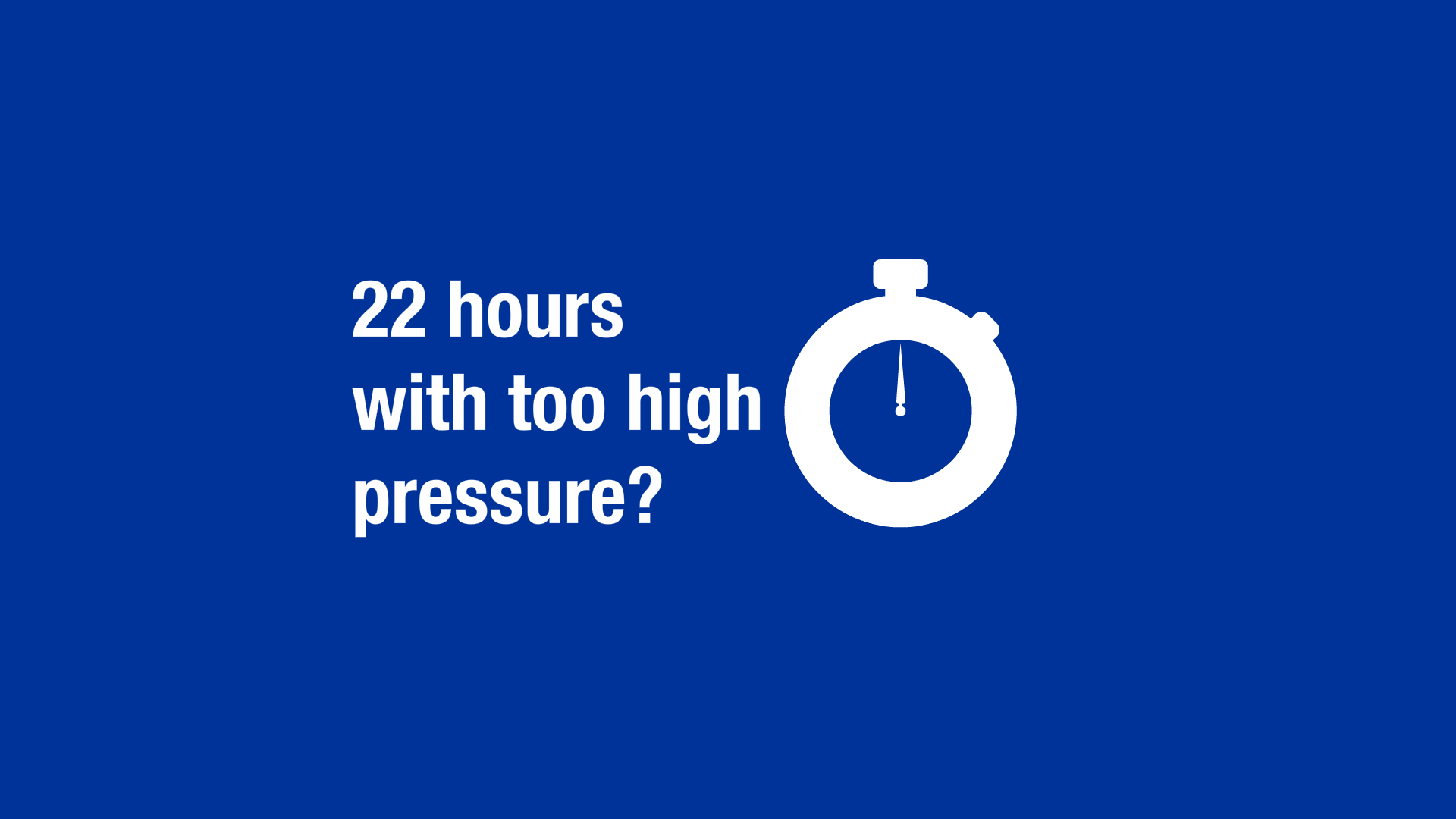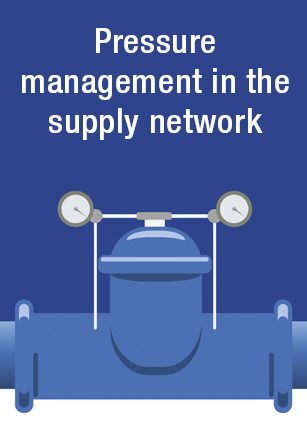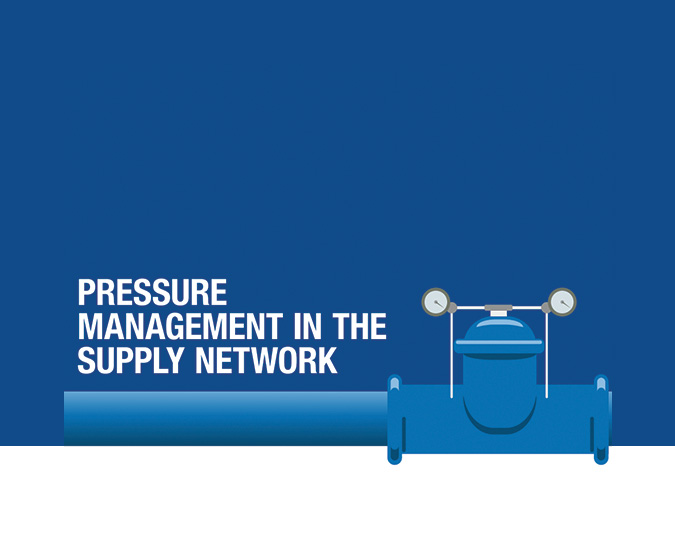
Advantages of pressure management in the supply network
Efficient control and regulation of pressure in the water supply network can provide significant resource savings as well as reduce non-revenue water levels.
Pressure management is considered the most beneficial and cost-effective leakage management activity. Pipe bursts occur not only because of high pressure but also due to frequent pressure fluctuations. This forces the pipes to repeatedly expand and contract, resulting in pipe stress and fractures. Moreover, there is a direct correlation between leakage flow rate and pressure – higher pressure leads to higher leakage rate and vice versa. For this reason, the pressure should be kept at a minimum level, ensuring consumer needs are met and not overburdening the network.
Ensuring adequate water pressure for consumers
Water utilities measure the quality of their water supply by their ability to deliver sufficient pressure to consumers. To always guarantee this, the utilities are often using a constant inlet pressure to individual zones or districts.
The pressure consumers experience depends on the friction in the supply line. Flow rates are influenced by friction and therefore fluctuates based on consumption. To compensate for the friction, utilities tend to set the inlet pressure higher than the required minimum. However, this constant inlet pressure causes the pressure at the consumer’s end to vary throughout the day – being highest when water demand is low and lowest during peak consumption periods, such as mornings and evenings.

22 hours with too high pressure?
To ensure that consumers never experience inadequate pressure, the inlet pressure is usually set to handle peak consumption periods. However, a typical consumption pattern for the water supply shows that consumption peaks for only a short time during the day, usually no more than two hours. There are of course exceptions to this, for example if there are water-consuming industries in the area.
This approach results in unnecessarily high pressure for the remaining 22 hours a day, which significantly impacts the distribution network. High pressure affects the overall service life of components and increases the frequency of pipe bursts and leaks. Learn more about the advantages of using control valves for pressure management.
A lower pressure reduces pipe bursts and leakage – and thus also non-revenue water
Reducing pressure directly correlates with fewer pipe bursts and lower leakage. An international study showed that a 37% reduction in average pressure led to a 51% decrease in the number of pipe bursts (source).
High pressure increases water loss through leakages, as leakage from holes in the pipeline highly depends on pressure. For instance, a 5 mm hole will result in a water loss of approximately 11,520 m3 per year if the pressure is 5 bar. Reducing the pressure to 4 bar will reduce water loss by about 11%, saving 1,267 m3 annually. This reduction also translates to energy savings – equivalent to approximately 461 kWh/year per 5 mm hole in the pipeline. See calculations in the text box at the bottom of the page.
See control valves application examples.
Time and flow-based approaches to efficient pressure management
Pressure reduction in the distribution network is a practical strategy that improves system performance without sacrificing quality. Lowering inlet pressure during periods with low consumption maintains an acceptable minimum pressure for the consumers while minimising pipe bursts and fractures. Thus, there will be less interruptions in the water supply and consumers will, in general, experience a more consistent pressure throughout the day.
Installing control valves at district or zone inlets allows for a very efficient pressure regulation based on time or flow. See our range of control valves.

Time-based pressure management
Time-based pressure management adjusts the pressure in districts or zones based on set points according to pre-set schedules. This way, the pressure is lowered during periods with expected low consumption and raised when consumption is expected to increase. As a result, the average pressure is significantly reduced.
Flow-based pressure management
Flow-based pressure management uses signals from a flow meter to dynamically adjust the outlet pressure of the control valve according to real-time consumption. This will reduce the average pressure and ensures more stable pressure levels for the consumers. It accounts for atypical scenarios such as holiday periods, fire hydrant usage and other things that give rise to abnormal consumption patterns.
Download PDF on pressure management
We have gathered a lot of information about pressure management and made it easily accessible for download as a PDF.
Pressure management in the supply network

Energy savings by lowering the pipeline pressure from 5 to 4 bar pressure
∆P (differential pressure in Pa) x Q (flow in m3/sec) = hydraulic effect in Watt
5 bar pressure:
500,000 Pa x 0.0003653 m3/sec = 182.65 Watt
Annual energy use: 182.65 Watt x 8760 hours = 1,600,014 Wh / 1000 = 1,600 kWh/year
4 bar pressure:
400,000 Pa x 0.0003251 m3/sec = 130.04 Watt
Annual energy use: 130.04 Watt x 8,760 hours = 1,139,150 Wh / 1000 = 1,139 kWh/year
Savings:
Annual energy savings.: 1,600-1,139 = 461 kWh/year






